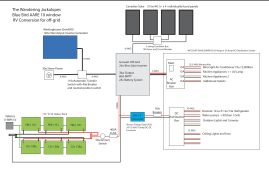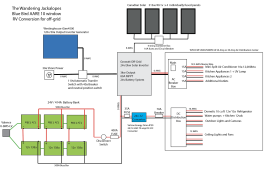TheWanderingJackalopes
New Member
- Joined
- Mar 23, 2022
- Messages
- 27
My wife and I are converting a 30' school bus into an RV that will be our traveling retirement home once we downsize. I'm almost done with the plumbing, and soon it will be time to focus on the electric. The heart of the system is a Growatt off-grid solar converter. The battery bank is over-sized for the number of panels we have, and I'm okay with that. I think I have figured out the components and wire gauges, but I sure would appreciate having some folks with more knowledge and experience than myself take a look at it and tell me where I might have mis-stepped. Also, new member on the forum, so I hope this is a good way to start interacting. - Tim
EDIT: Ignore the drawing of the Battery wiring. I was trying to figure out how to draw in bus bars and equal length wire and forgot to wire the schematic for 24v.
EDIT: Ignore the drawing of the Battery wiring. I was trying to figure out how to draw in bus bars and equal length wire and forgot to wire the schematic for 24v.
Attachments
Last edited:




